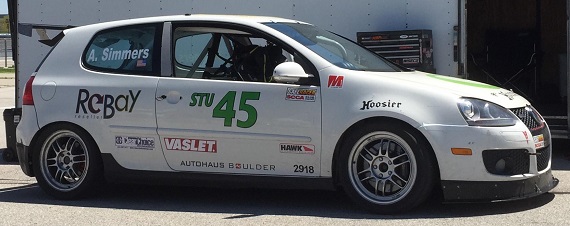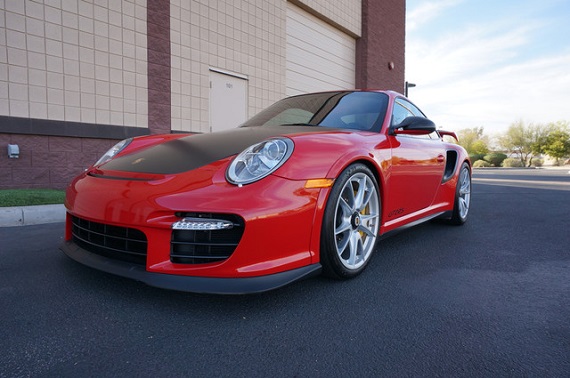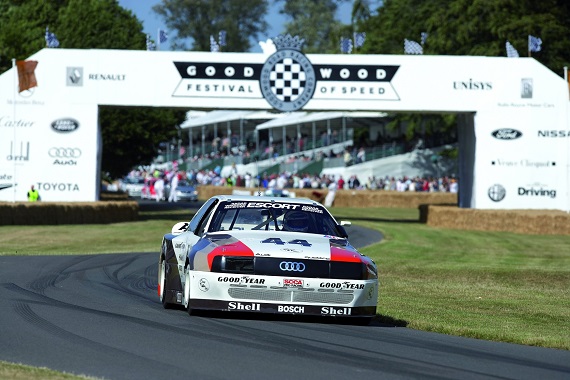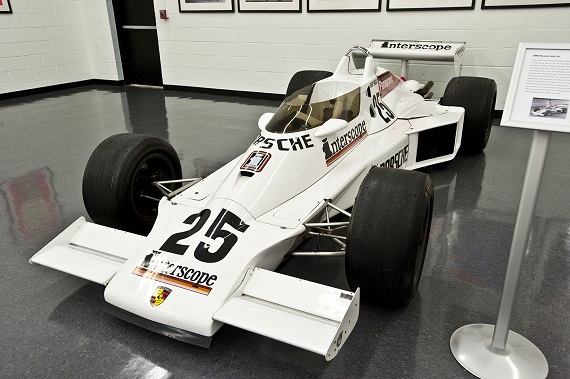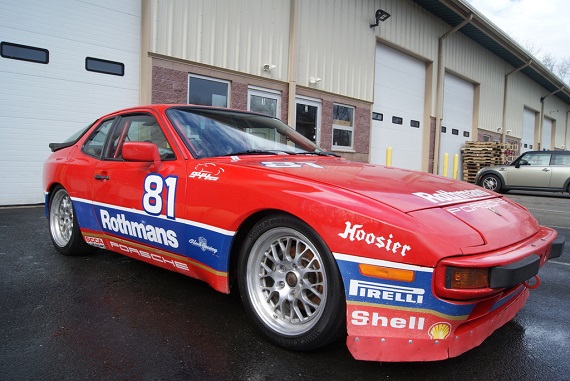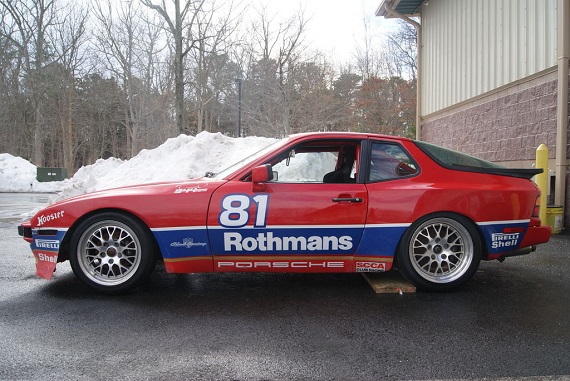There are some (quite a large number, in fact) who claim you can’t have fun on a race track in a front wheel drive car. I know quite a few of them. And in the wrong front driver, they’re likely right. Take a 1976 Cadillac Eldorado with its 8.2 liter V8 channeled through one front tire at any time and enough body roll to mimic a rowboat during Katrina and the recipe might be humorous, but doubtfully fun. However, 1976 also saw the introduction of a revolution in front drive platforms – the very first Golf GTi. Consider, for a moment, that GM’s replacement in 1977 for the thirsty 8.2 V8 was a every-so-slightly less thirsty 7.0 liter V8 (it was, after all, fuel crisis time….). That cast iron monster produced a heady 180 horsepower. Volkswagen engineers took a inline-4 with only 1.6 liters and twisted 110 horsepower out of it in a car that weighed about the same as the motor in the Cadillac. That was the magic of the GTi and it’s why it started the trend of hot front wheel drive cars that still is running arguably stronger than ever today. With clever transmissions, electronics and differentials, perceived weaknesses in the design have been nearly eliminated and most of the really trick nose FWD cars are as quick – if not quicker in some cases – than their rear-drive counterparts around a track. Therefore racing FWD cars is still a popular past time as today’s quite successful GTi is a testament to:
Category: Motorsports Monday
I’m fairly certain this will be the least expensive of this group of cars I hope to feature, but that should not detract from our wonder and desire. It also may be the baddest 911 of them all. The Porsche 911 GT2 RS delights in excess. Gone are most of the luxuries familiar to owners of the 911 Turbo. Also gone is the confidence inspiring all-wheel drive system Porsche first made standard on the Turbo with the 993. In the place of those features is more power. However, those statements simply apply to the 911 GT2; an already mad car that pushed the bounds of what is possible in a rear-engine rear-drive machine. The RS provides a combination of both more and less. More power, less weight. For the GT2 RS that means 620 hp flying towards the rear wheels. And there’s no fancy transmission to allow the driver to keep both hands firmly gripping the wheel for perfect shifting every time. On top of all of that power is a 100 pound weight savings over the regular GT2 – adding up to a 400 pound weight savings over the already exhilarating 911 Turbo S. Like with any RS, the GT2 RS is focused and track inspired with performance that is almost incomprehensible on the street and certain not fully exploitable. If Porsche produced this model as an exercise of sorts, something to test their limits, it made quite the impression.
CLICK FOR DETAILS: 2011 Porsche 911 GT2 RS on eBay
Comments closedOne of the things I love the most about Audi is that for some time they liked to do things differently. Now, if you’re Porsche and you’re able to build a reputation around that insistence to do things differently through racing, then you can be a successful company. As such, the closely linked cousin Audi was taken racing by some of the same team from Porsche. The first big attempt in the 1980s was the push to win the World Rally Championship with their new Quattro model. Highlighting turbocharged technology coupled with a semi-revolutionary all-wheel drive system, the Quattro was a positive sensation until the mid-1980s and the death of Group B. Audi then took on Group A with the non-turbo Coupe quattro briefly, and also enjoyed some unlikely success rallying with their 200 sedan. But even success in World Rally Championship events wasn’t enough of a reputation boost for what lay ahead of Audi next, as 60 Minutes highhandedly nearly took the company right out of the marketplace. In order to rebuild the reputation of the company in the U.S., Quattro guru Jo Hoppen convinced Audi to go racing in the SCCA Trans-Am series. Headlining that series were tube-frame V8 behemoths that outwardly laughed as a production based luxury sedan with a measly 2.1 turbocharged inline-5 hanging way out the front pulled up to grid. It turned out they didn’t laugh too long:
CLICK FOR DETAILS: 1988 Audi 200 quattro Trans Am at Auto Collections
2 CommentsMost younger readers won’t immediately think any of the German marques were well established in single seaters prior to recent Mercedes-Benz domination in Formula 1. And to be fair, as individual manufacturers that is nearly the case, although Porsche did develop a pretty impressive single race winner in the flat-8 804 of 1962. And, let’s not forget that it was both Mercedes-Benz and Auto Union that had really spurred the development of modern single-seat racing in the pre-War Silver Arrows. But far more prevalent has been German participation in single-seater construction as engine providers. From Volkswagen’s spec racers right through the mighty screaming Williams BMW V10s, there’s a long and storied history of German power. But oval racing? That’s another story, right? Well, actually the Germans have been there right along, too – with Mercedes-Benz taking part in the inaugural Indy 500 through the mega-dominant Ilmore Penske PC-23. Porsche, too, has been tied with the Indy 500, running turbocharged V8s in March chassis in the late 1980s. But the more interesting story was the car that never ran – the 935-powered Parnelli/Interscope Racing entry from 1980:
CLICK FOR DETAILS: 1980 Parnelli/Interscope Porsche Indy Car on eBay
Comments closedI still recall my first trip up to Mosport well in the early 2000s. I accompanied my father to a Porsche Club of America race up there, and his 924S was running against some pretty stiff competition. The fastest cars in his class at that event were a pair of pale yellow and black 944s, both wearing “Rothmans” livery. At the time, I figured these were custom graphics applied to mimic the look of the period Porsche race cars, but it didn’t take long for me to be corrected, as one of the owners schooled me about the Rothmans Cup series. Even with a fair amount of brand-specific race knowledge, I had only been aware of the Turbo Cup that was run concurrently around the world as a support series for larger races, but Canada also had an earlier normally aspirated 944 Cup. These racers were the lightest 944s available, and though modifications were quite limited they were still very potent in original form when driven well. As the seller notes, only 31 of these lesser known racers were built, making them much more rare than their later Turbo counterparts, and these cars are now accepted at events such as the Rennsport Reunion, though properly driven they’re still class leaders in PCA 944 Cup racing:
